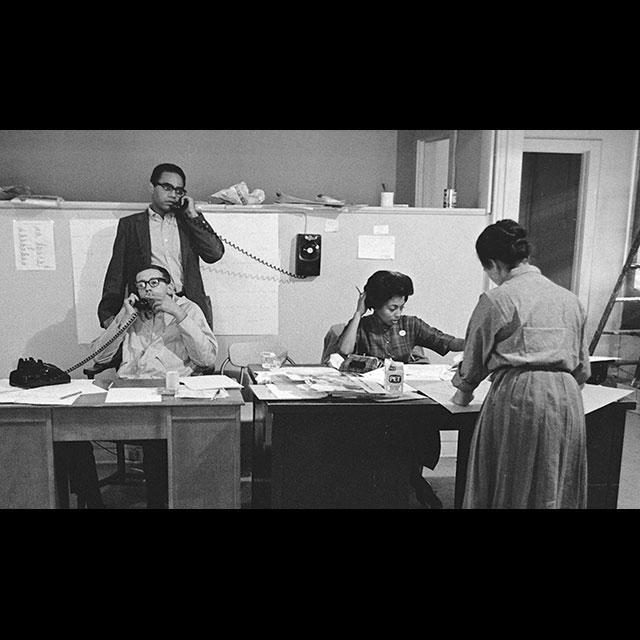Movement organizers set up makeshift offices in houses, churches, and empty storefronts. They ran off meeting fliers and voter registration applications on borrowed mimeograph machines. They used toll-free WATS lines to communicate between offices and track field staff. The collaboration of older people, full-time civil rights organizers, and youths began to raise hopes. New tactics like citizenship classes, cooperatives, and pray-ins allowed for more Mississippians to be part of the movement as it began to mature.
Pictured: A black and white photograph of Bob Moses in a COFO office. Moses is standing and talking on a black rotary phone. A man is seated in front of him on another phone and smoking, and two women are on the right looking at paperwork.
Credit: Ken Thompson/Global Ministries

